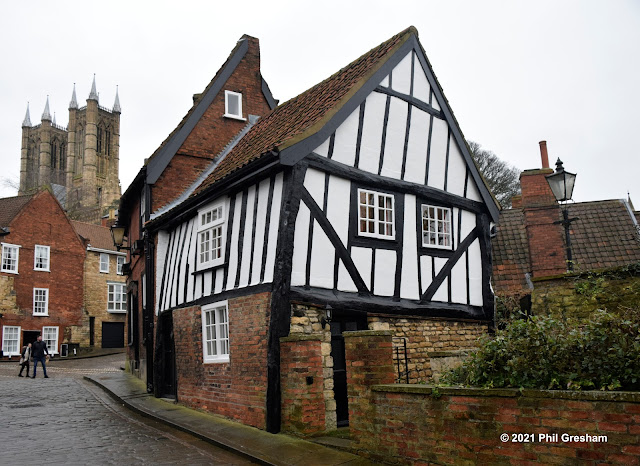The battle was fought on the 2nd February 1141 between Stephen, King of England, and the earls Ranulf and Robert, supporters of Matilda.
Ranulf made contact with Robert of Gloucester and also managed to raise a significant contribution from Wales.
Meanwhile Stephen busied himself with the construction of siege engines and made plans to retake the castle, whilst the earls of Chester and Gloucester combined forces and marched on Lincoln to raise the siege.
The site of the battle was between the castle and the West Common.
The core of Stephen's force was composed of some Breton and Flemish mercenaries, under the command of William of Ypres and Alan of Dinan respectively, and Stephen may well have believed that with such professional troops on his side he had little to fear.
Stephen sent some of his troops forward to attempt to prevent the opposing army from crossing a nearby ford, but the opposition charged his lines, seized the ford and proceeded to engage the main body of his army. It soon became clear that Stephen was in danger of losing. The two earls therefore seemed to have had the advantage of numbers and they rapidly made it tell.
When the citizens of Lincoln heard of the king's defeat, many of them abandoned their homes and fled towards the nearby river and sought to escape by boat across the water, but many were drowned when the boats capsized in the general panic to escape.
Stephen was taken prisoner and taken to Gloucester before being imprisoned in Bristol Castle. With Stephen now out of action Matilda could (and did) consider herself Queen of England. She travelled to Winchester where the assembled clergy hailed her as the Lady of the English before proceeding to London where she began arrangements for her coronation. Unfortunately for Matilda her general arrogance and petulant demands for money soon angered the citizens of London sufficiently that they rose up against her and drove her out. Furthermore, Stephen's wife raised an army herself, and managed to defeat and capture Robert of Gloucester at the battle of Winchester. Matilda was forced to release Stephen in exchange for her brother Robert.
"Then might you have seen a dreadful aspect of battle, on every quarter around the king's troop fire flashing from the meeting of swords and helmets - a dreadful crash, a terrific clamour - at which the hills re-echoed, the city walls resounded. With horses spurred on, they charged the king's troop, slew some, wounded others, and dragging some away, made them prisoners. No rest, no breathing time was granted them, except in the quarter where stood that most valiant king, as the foe dreaded the incomparable force of his blows. The earl of Chester, on perceiving this, envying the king his glory, rushed upon him with all the weight of his armed men. Then was seen the might of the king, equal to a thunderbolt, slaying some with his immense battle-axe, and striking others down. Then arose the shouts afresh, all rushing against him and him against all. At length through the number of the blows, the king's battle-axe was broken asunder. Instantly, with his right hand, drawing his sword, well worthy of a king, he marvellously waged the combat, until the sword as well was broken asunder. On seeing this William Kahamnes, a most powerful knight, rushed upon the king, and seizing him by the helmet, cried with a loud voice, 'Hither, all of you come hither! I have taken the king!'"
The Anarchy
The Anarchy was a civil war in England and Normandy between 1135 and 1153, characterised by a breakdown in law and order. The conflict originated with a succession crisis towards the end of the reign of Henry I, when the king's only legitimate son, William Adelin, died aboard the White Ship. Henry's attempts to install his daughter, the Empress Matilda, as his successor were unsuccessful and on Henry's death in 1135, his nephew Stephen of Blois took power with the help of his brother, Henry of Winchester.






















